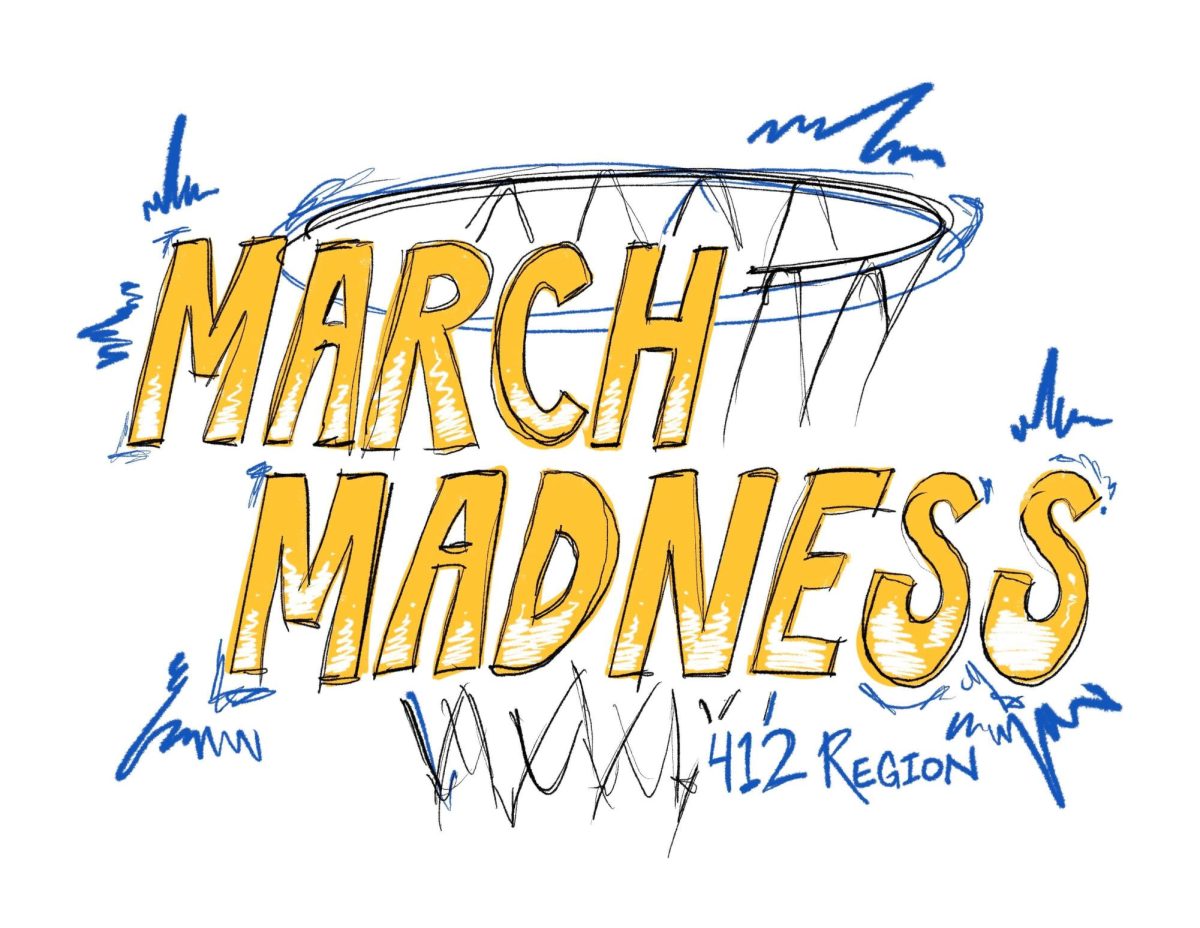Police begin crackdown on jaywalking
February 16, 2014
It’s no surprise to see students — operating under the assumption of safety in numbers — cross Forbes Avenue in herds in the vicinity of David Lawrence Hall
But in an e-mail sent to residence-hall students on Jan. 29, Pitt police let students know that they will soon begin cracking down on the practice, instructing students to “obey traffic laws and cross at a pedestrian crossing or utilize the walk bridge to Towers Patio.”
Officer Guy Johnson, the Community Relations Officer of the University of Pittsburgh Police Department, said safety is the reason the officers have chosen to focus on this offense. Johnson said he’s been filming the area at different times of the day to quantify the number of students jaywalking after discovering that the practice was a persistent safety issue in the area.
“[The students are] dodging cars. It’s just not safe,” he said. “Jaywalking is something that, in Pittsburgh, we don’t enforce as much as in other cities, but we’re going to pay attention to it. The main reason is for safety.”
Pitt spokesman John Fedele said the Pitt police are increasing traffic patrols in the targeted stretch of Forbes Avenue and have noticed many people crossing illegally.
Fedele said the University has made the initiative to prevent jaywalking a priority for the safety of both students and drivers.
“The Oakland area sees many visitors who may be unaccustomed to pedestrians crossing outside of crosswalks, and this is complicated by the bend on Forbes Avenue in the area of David Lawrence Hall that limits vision,” Fedele said in an e-mail.
Under Title 75 of Pennsylvania’s state law, crossing streets outside of crosswalks is prohibited in cities.
“Between adjacent intersections in urban districts at which traffic-control signals are in operation, pedestrians shall not cross at any place except in a marked crosswalk,” the law states.
Amanda Albano, a sophomore majoring in civil engineering, said jaywalking can be dangerous if students aren’t cautious.
“It can be dangerous if you’re not looking the right way, but I don’t think it’s the number-one most dangerous thing that kids are doing these days,” Albano said.
Pitt police and the University has consolidated efforts to prevent the continuation of crossingthe street illegally near David Lawrence Hall.
Johnson said the police are working with Pitt’s Department of Student Affairs to raise awareness of the dangers of walking in the street outside of designated areas. Johnson said the police have yet to decide if warnings or citations will be issued to students caught jaywalking.
The current fine for jaywalking is $5 plus court fees, which currently total $37.50.
“You could plead guilty and pay that fine or request a hearing with the magistrate and explain to him why you were crossing in the middle of the street illegally,” Johnson said.
Johnson said officers must be consistent in issuing citations in order for the initiative to be effective. He didn’t know how much manpower it would take to patrol the area.
“It could be a monumental task, because there can be quite a few students who cross over the course of the day,” he said.
John Rice, a sophomore majoring in engineering, said it seems unlikely the Pitt police will be able to issue citations to all of the people who cross illegally throughout the day.
“Unless they do it nonstop, it’s just not going to happen. There’s too many students,” Rice said.
Albano also mentioned that the students often travel in large groups in the troubled area.
“People walk across there with 10 people in a line, so who’s going to be going around stopping them?” Albano said.
Safer crossing areas would be preferable for the Pitt police and the University.
“Rather than warning or citing pedestrians violating that law, Pitt police would rather see them using the existing pedestrian bridge over Forbes or crossing at the Bigelow [Boulevard] or Bouquet [Street] intersection crosswalks on Forbes Avenue,” Fedele said.
Johnson said the Pitt police have discussed the installation of a railing similar to the one used to prevent pedestrians from walking into the bus lane on Fifth Avenue, but he’s not sure that the situation will call for one.
Ashley John, a freshman majoring in industrial engineering, said the installation of a crosswalk could help the problem.
“I see most people cross to those stairs up to the Quad, so I think a crosswalk there would be the most effective thing,” John said.
Andrew Buxbaum, a graduate student studying accounting, said this area is the most convenient place for him to cross and also believes a crosswalk would be effective in protecting students.
“I think they should put a crosswalk there or something to signify that students are going to cross there, because that happens a lot,” Buxbaum said.
Fedele said a crosswalk in front of David Lawrence Hall on Forbes Avenue would not be a feasible option at this point.
“Because of the bend in the road, a crosswalk would not be appropriate, as drivers would be approaching it blindly,” he said.
He also attributed the issue to the urban setting.
“I’ve been here for 30 years, and it’s always been a problem because we have a lot of pedestrians that go from class to class. It’s just the environment we’re in,” Fedele said.
Johnson also noted that pedestrians should be aware, even when walking in crosswalks, to refrain from texting or reading while in motion. He witnessed a woman get hit by a car crossing Bigelow Boulevard from the William Pitt Union to the Cathedral of Learning a few weeks ago.
“You might have the right of way in the crosswalk, but if the driver doesn’t see you, you’re injured,” he said.


